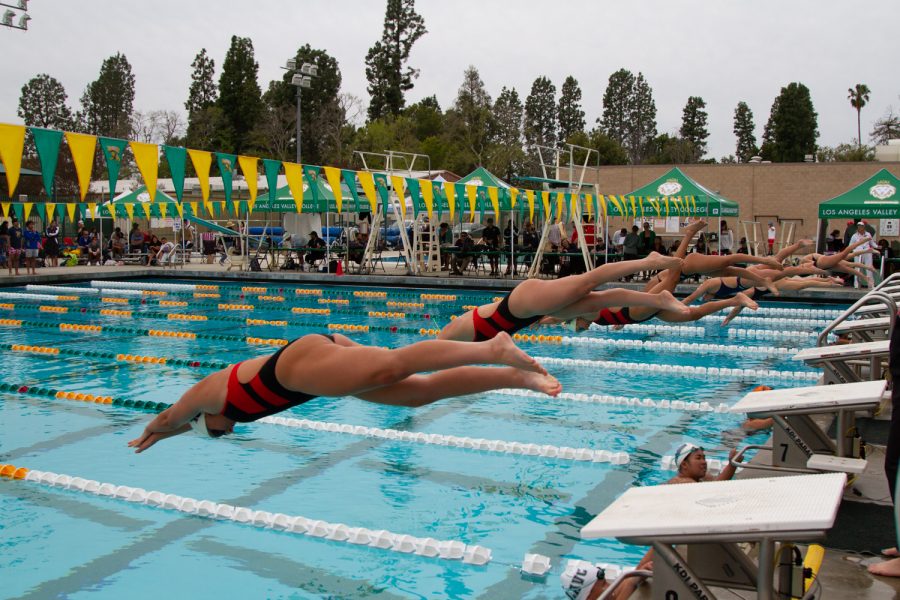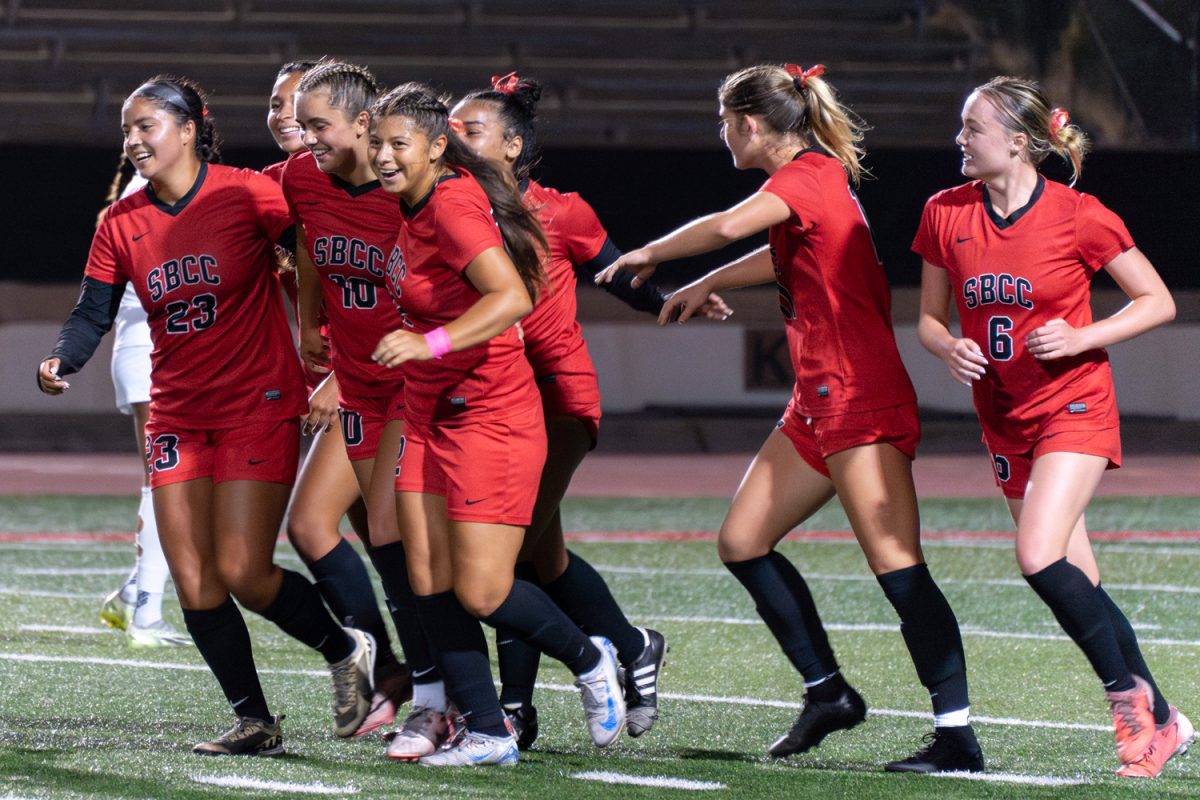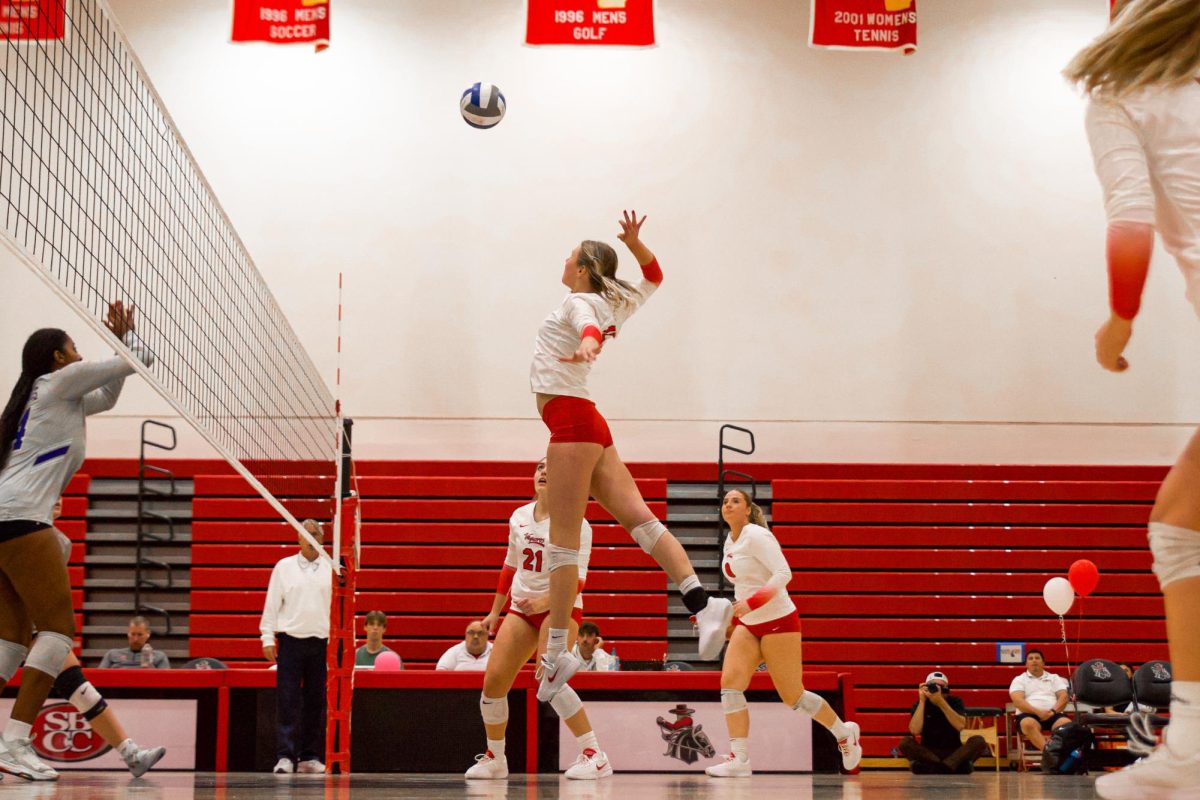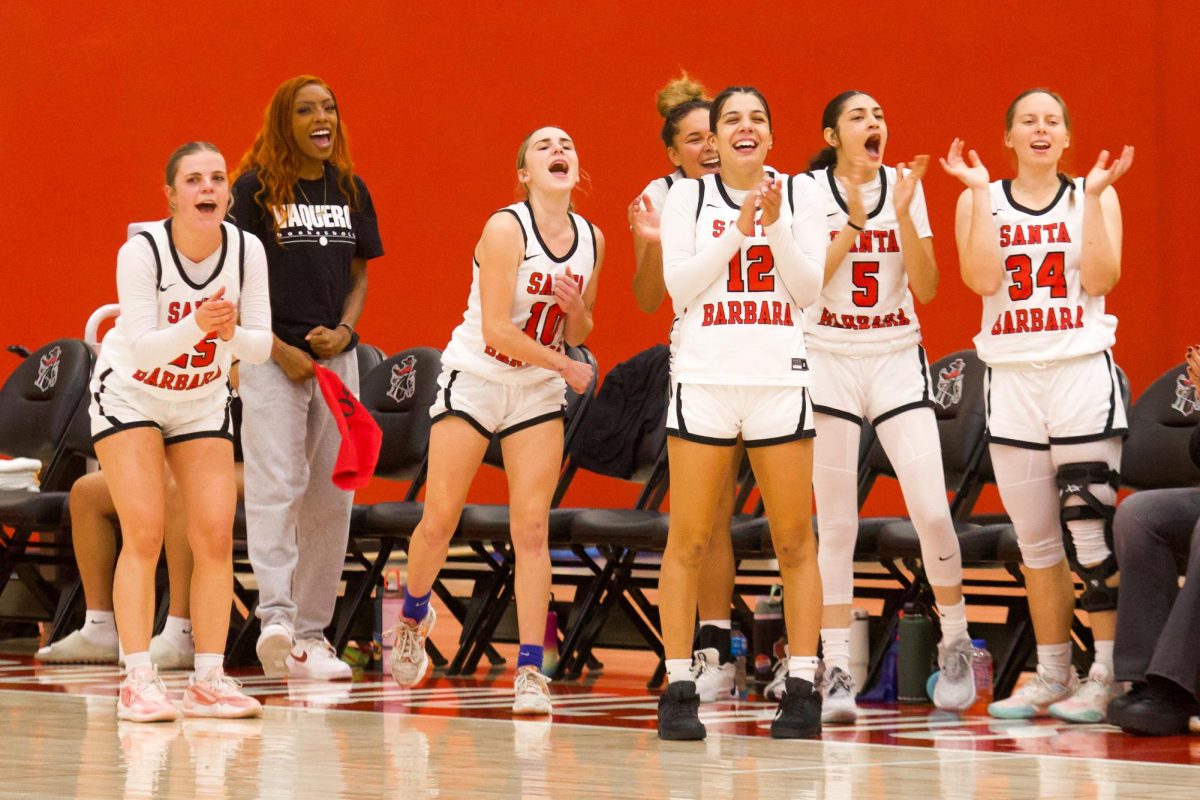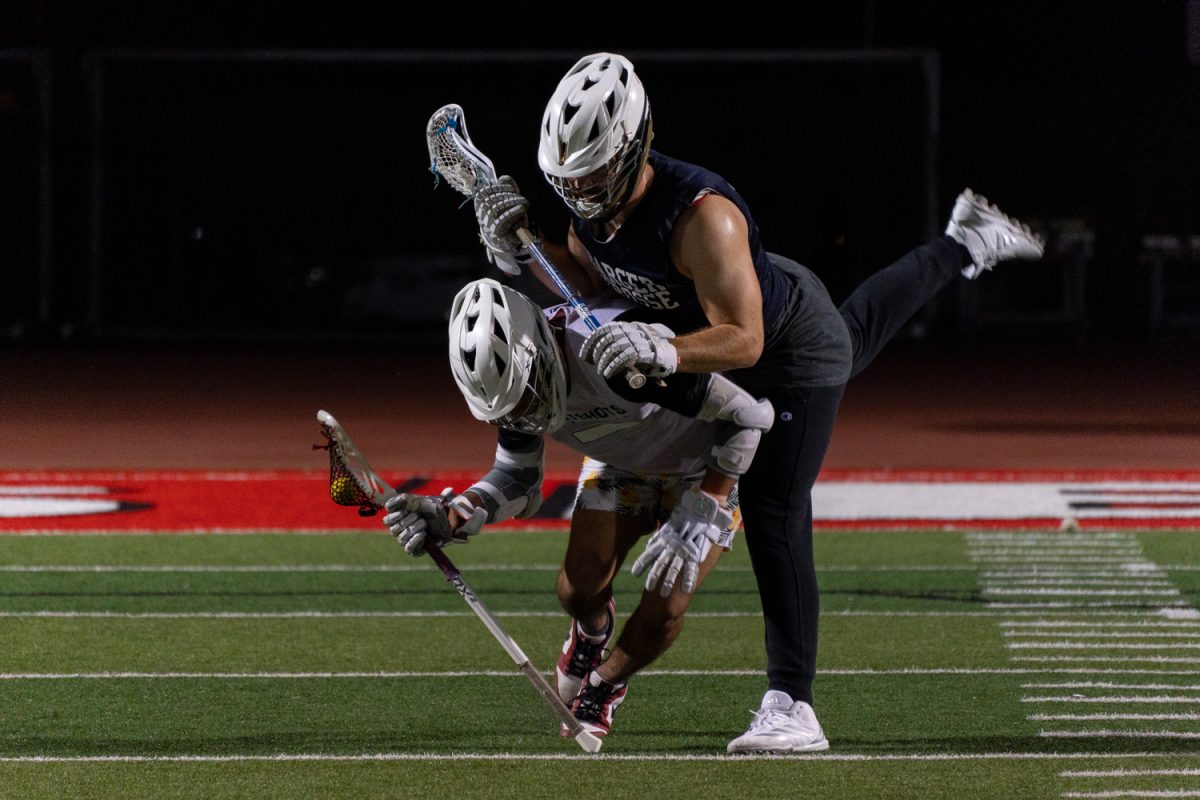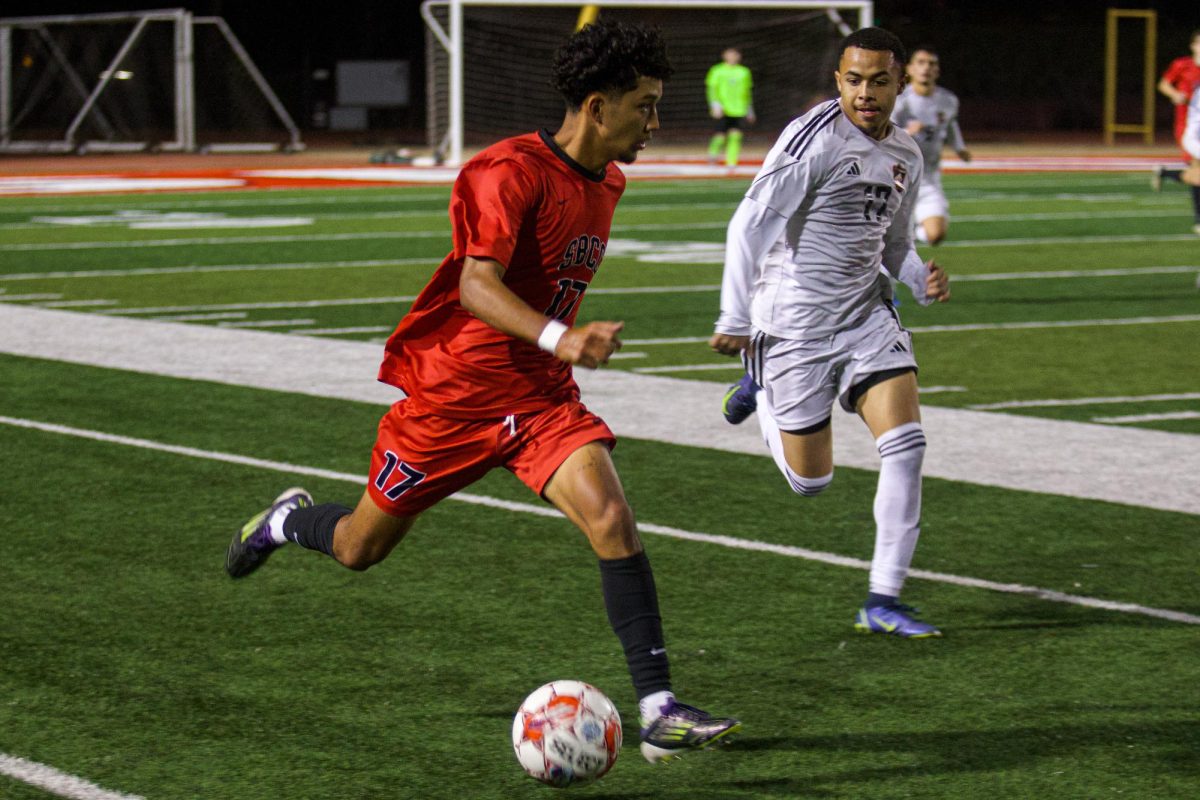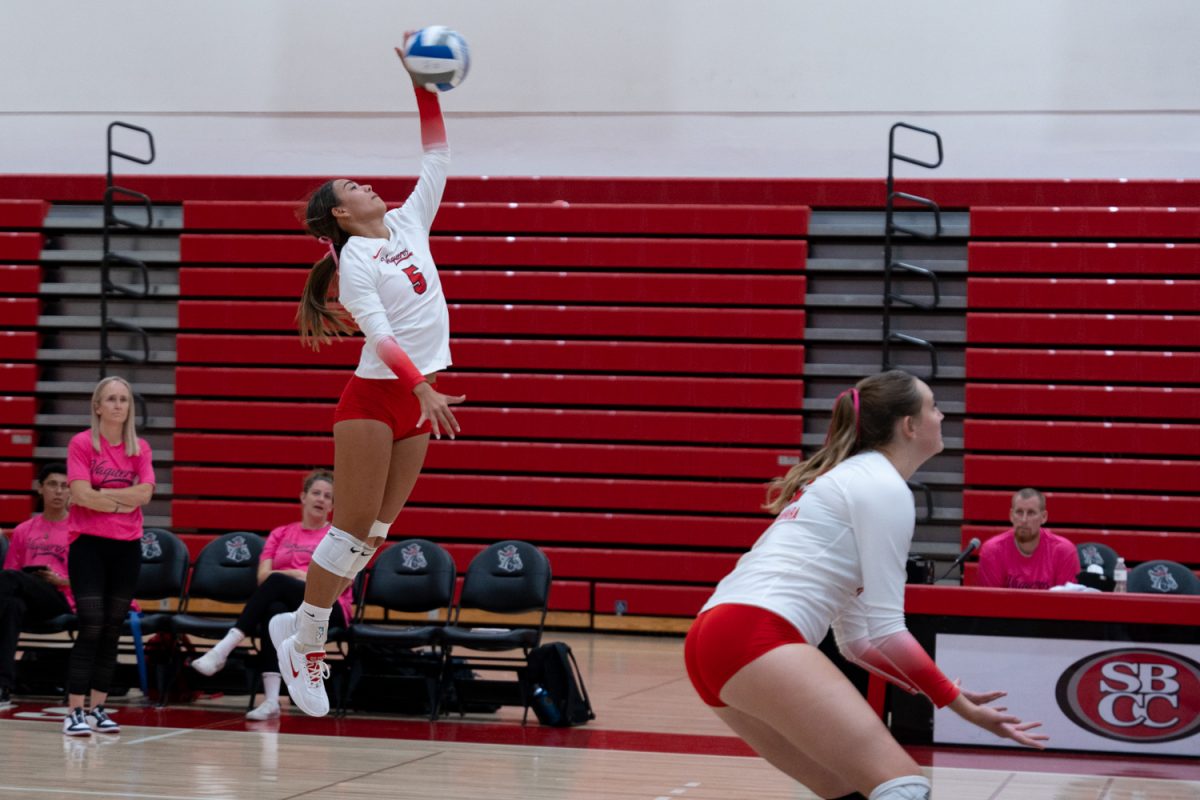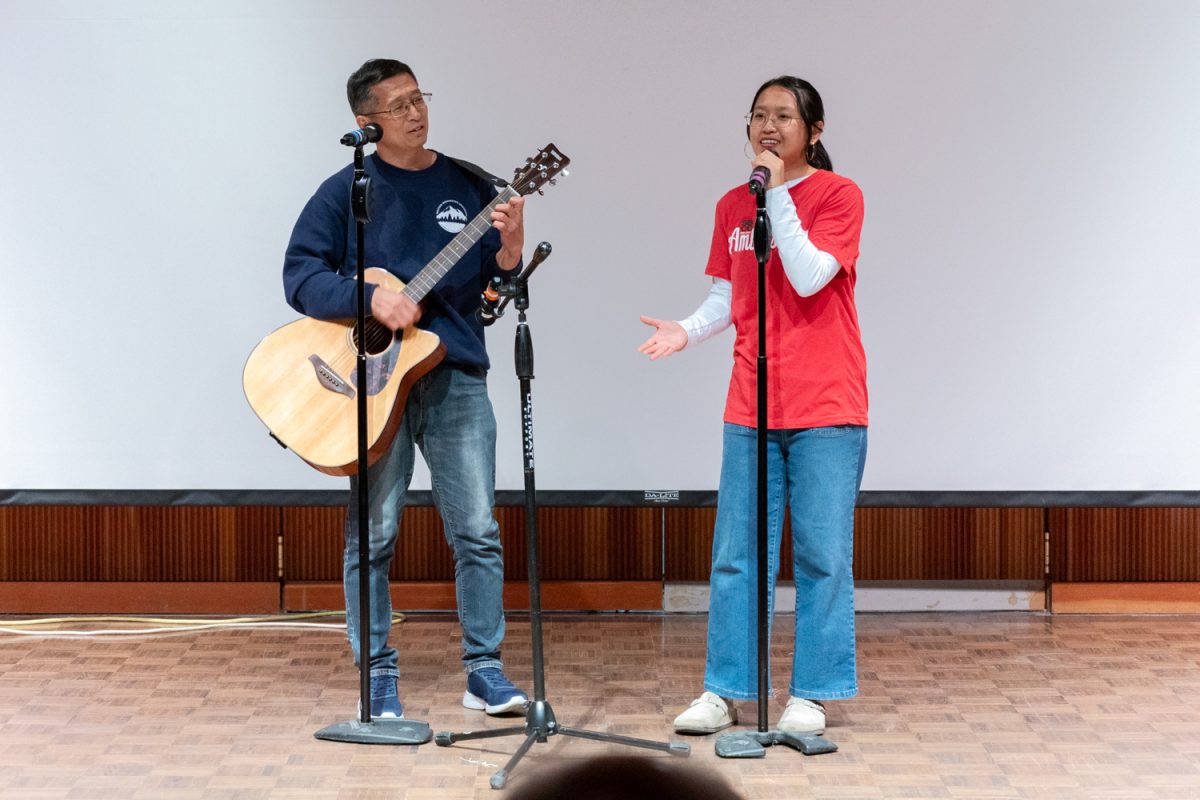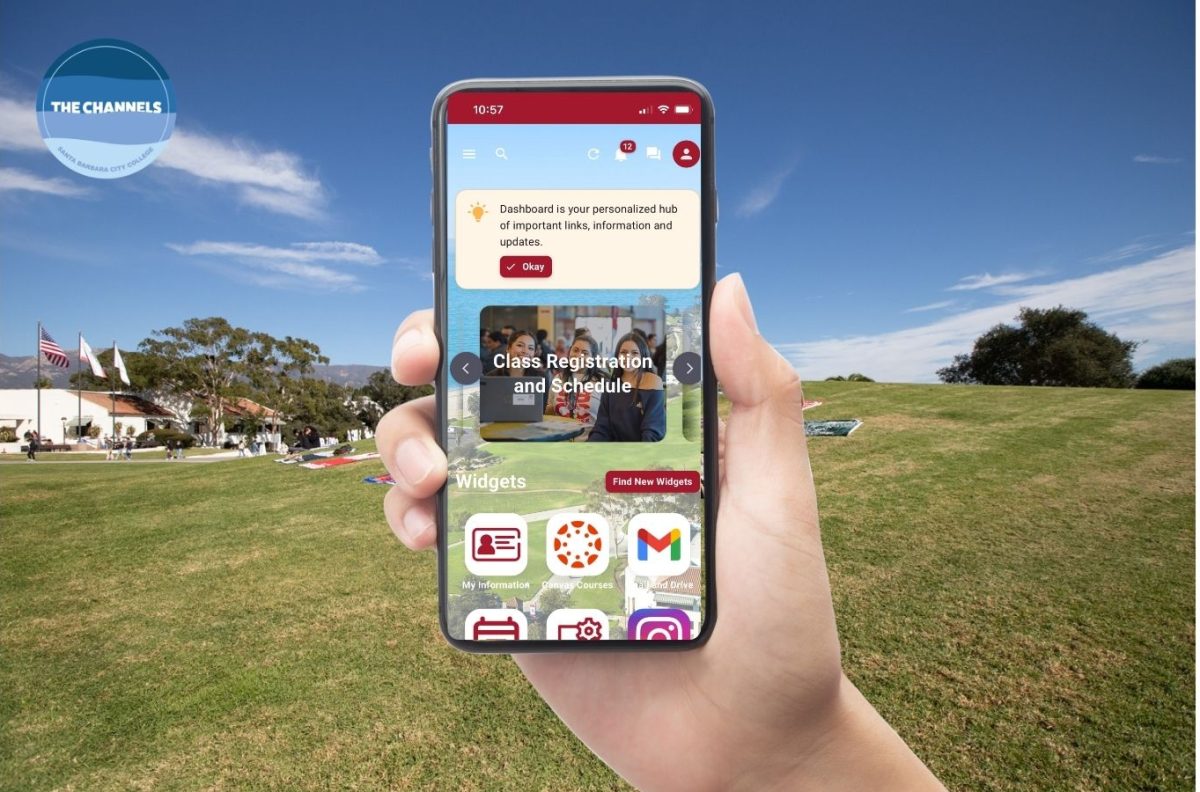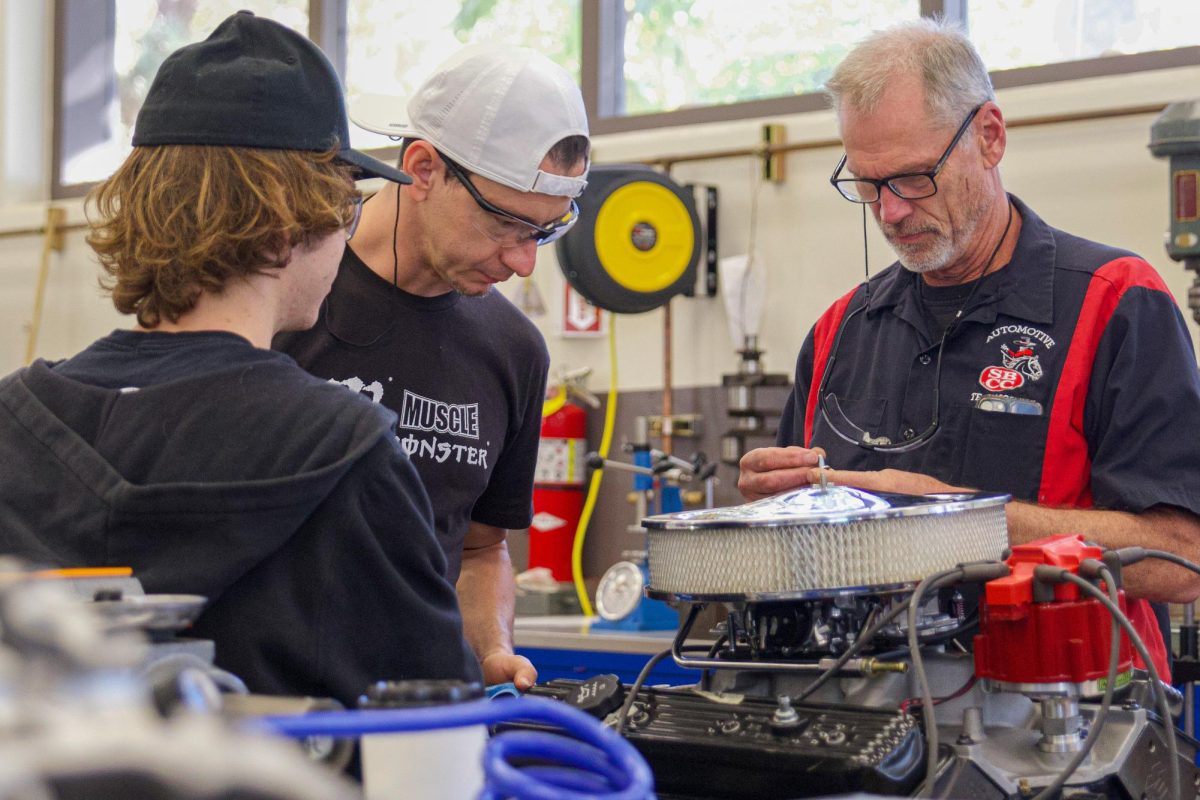The scent of aerosol sunscreen wafts across the pool deck. Teams from various schools are huddled together beneath brightly colored pop-up tents. Along one wall of the Los Angeles Valley Community College pool, a line of tents protects spectators from the sun.
Along another wall, Natasha Bedingfield’s “Unwritten” plays. City College’s women’s swim team is gathered beneath a red tent. Some sit or stand, quietly cracking jokes. Others are making friendship bracelets. One is asleep on her towel.
Nearly every week, the women’s swim team gathers on a different pool deck to perform a similar ritual. As they wait for their events to begin, they try to stay warm, conserve energy, and maintain a calm poise.
On days they are not competing, they are practicing. Between the hours of weightlifting, swimming laps, and performing drills, they have formed a tight bond.
Maddy Thompson joked that she spends at least 12 hours a day with her teammate, Natalie Mancinelli. The two girls are neighbors.
“Other swimmers, like four hours a day,” Thompson said, smiling. “Some of the girls live together, too.”
Many members of the swim team enjoy eating at local restaurants, including Santa Barbara Chicken Ranch, after practices. In these moments, they are able to sit and laugh casually together without the distraction of finishing a set of laps or weight repetitions.
The familiarity the athletes have with each other proves itself useful at meets. Nicknames and inside jokes are used as chants and cheers as the women split themselves into groups at either end of the lanes and shout encouragement at their swimming teammates.
After each race, congratulations are exchanged. Assistant Coach Paige Treloar-Ballard pulls the occasional athlete aside for a quiet moment of analysis before she is typically joined by a circle of team members offering animated jokes and gestures of support.
The support system offered to each swimmer extends beyond moments at meets and practices. The coaching staff puts in place a number of safeguards to ensure that athletes feel supported. This includes frequent check-ins and required hours in study hall for first-year members of the team.
“We don’t practice more than two to three hours a day max,” Alessia Gressi said.
She shares that swimmers are encouraged to maintain a balance between their sport, academics, and social and work lives.
Even on the long bus rides to and from the competition, Head Coach Chuck “Chuckie” Roth is able to take a few minutes with each athlete to discuss their mindset and overall stress level.
“Sometimes Chuckie will come around and talk with each of us,” Gressi said, describing bus rides.
“Check in,” added Claire Daland in soft agreement.
Between all of the moments of explicit encouragement, there is a flurry of goofiness and jokes. The swimmers hand each other the bracelets they made for luck and compliment each other on various tattoos, but the conversation quickly turns to the amusing hypothetical of accidentally tattooing a mistranslated word or phrase in Arabic or Chinese.
Circles of cheer frequently erupt into laughter as one athlete taking a strongman pose leads everyone to imitate her, pretending to be a bodybuilder.
By the final races of the meet, the smell of sunscreen has been replaced with pizza, and the few women competing in the last race laugh. They’re not losing out, after all. It’s just some more motivation from their teammates that the box happens to be open.


